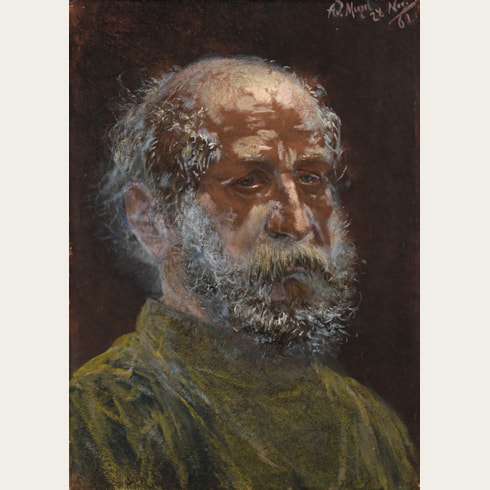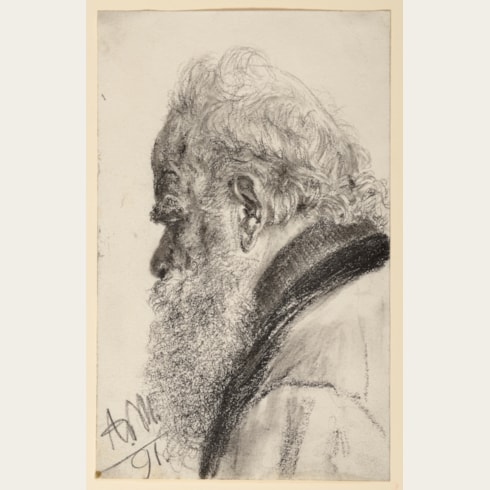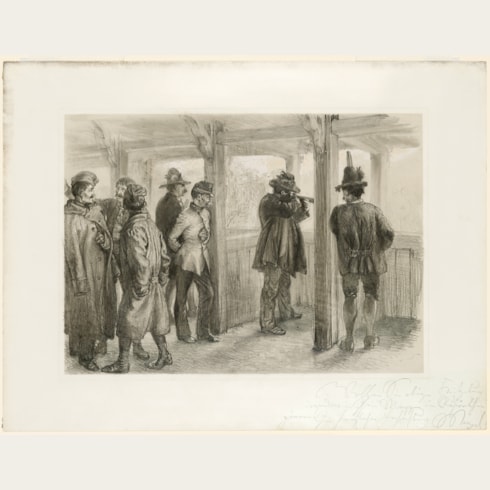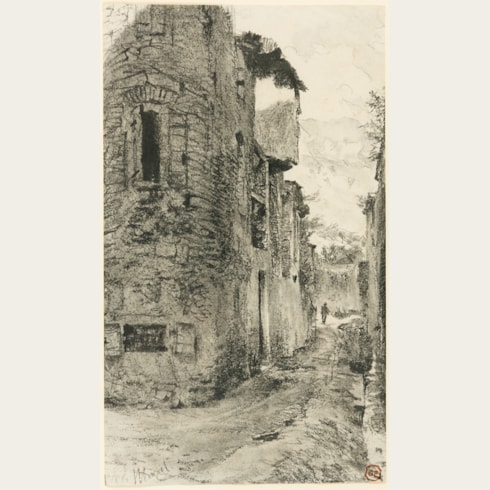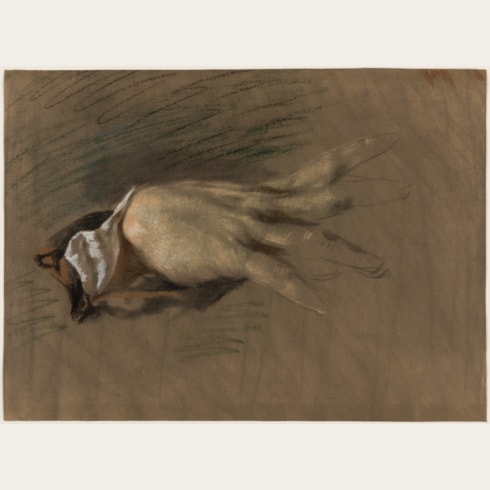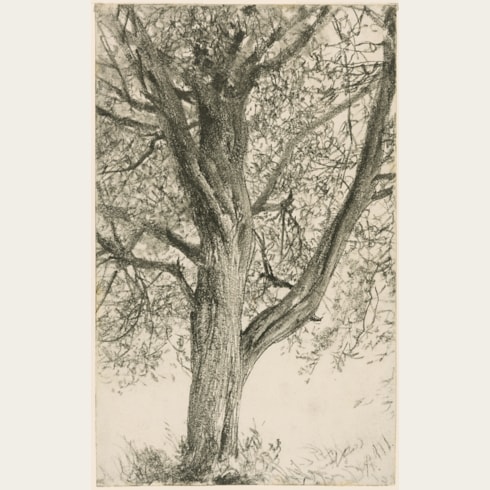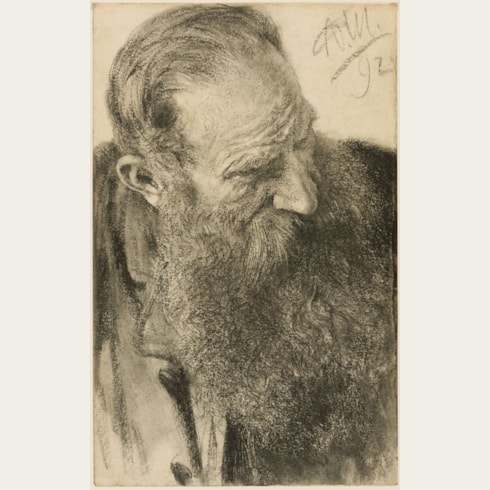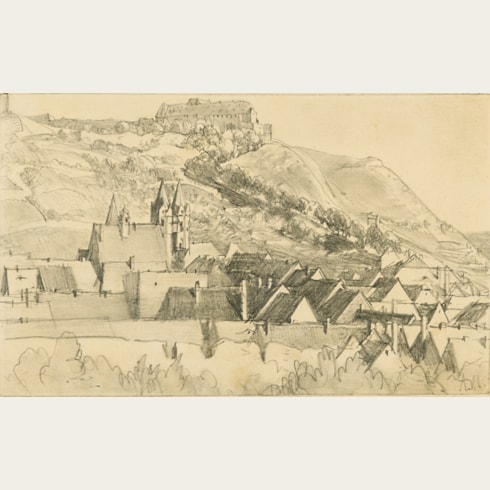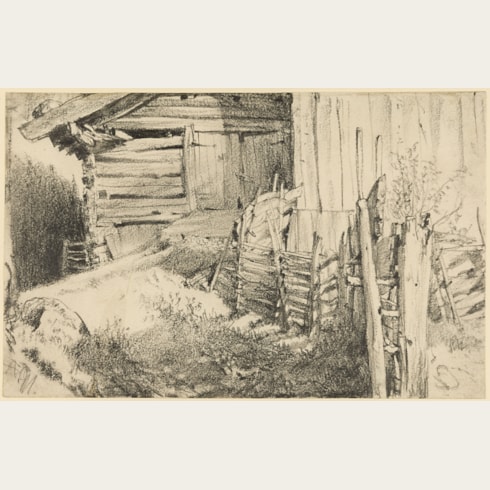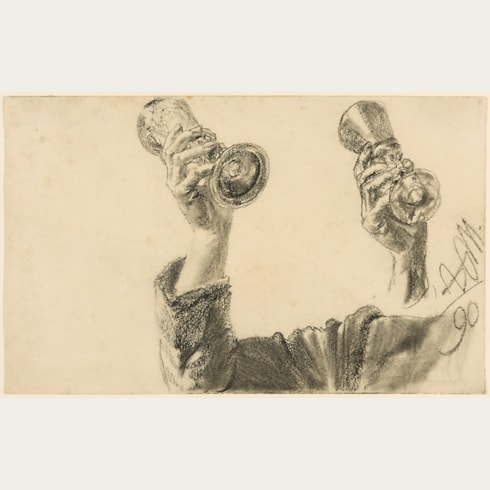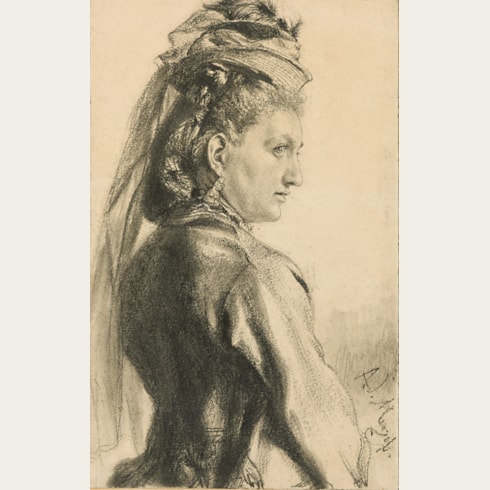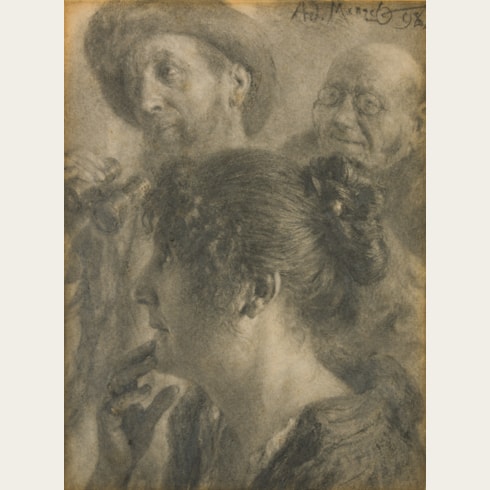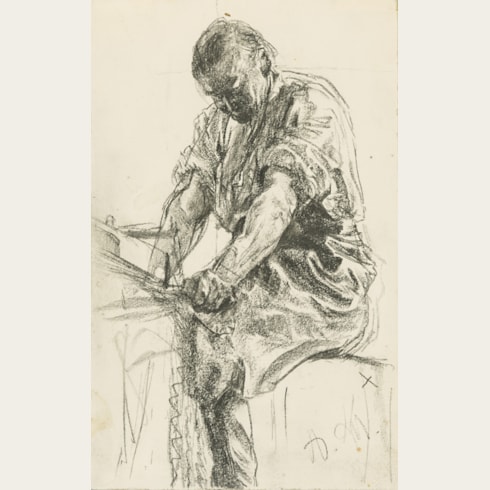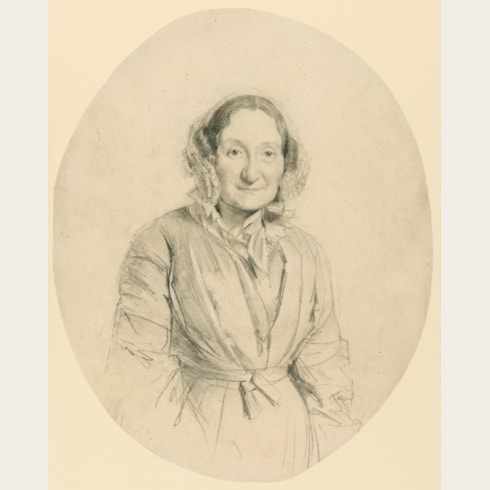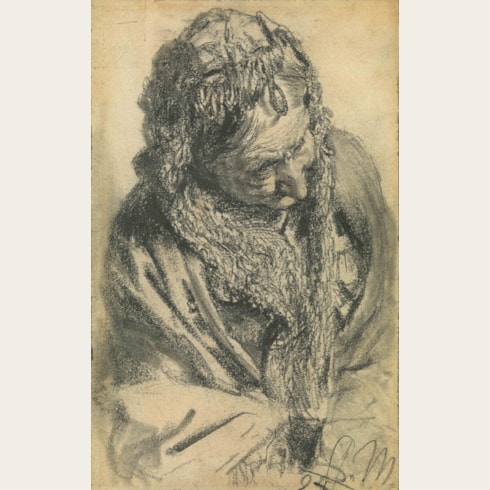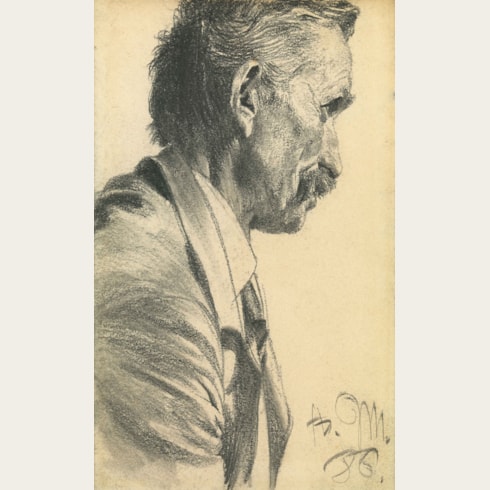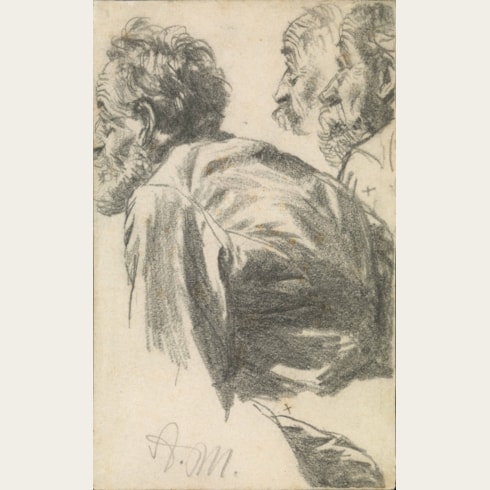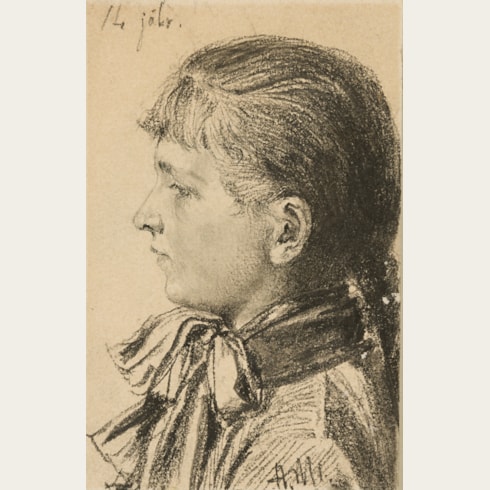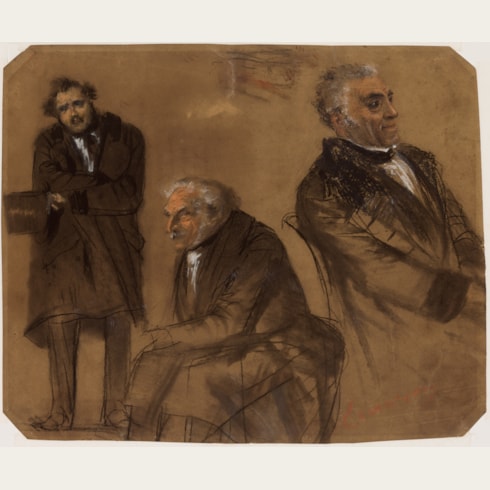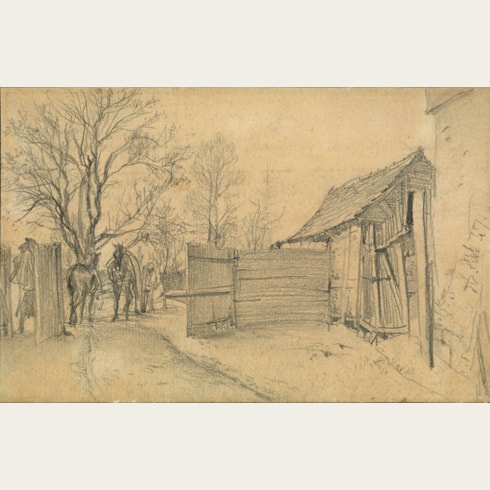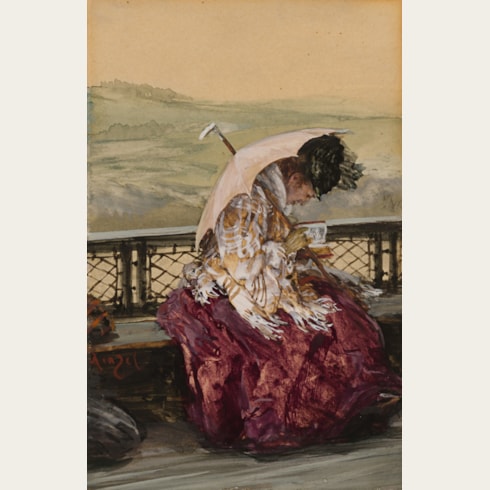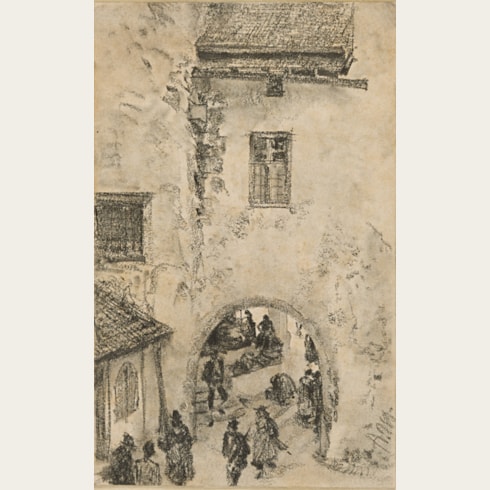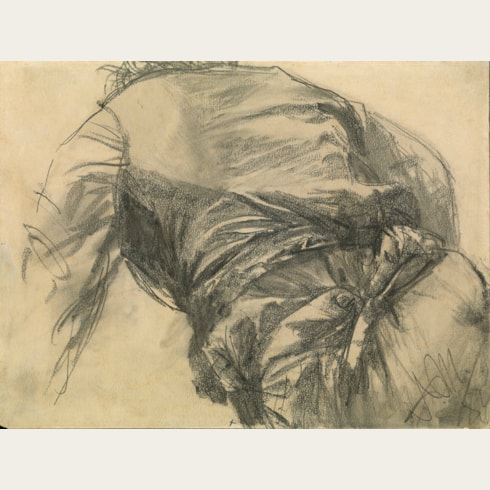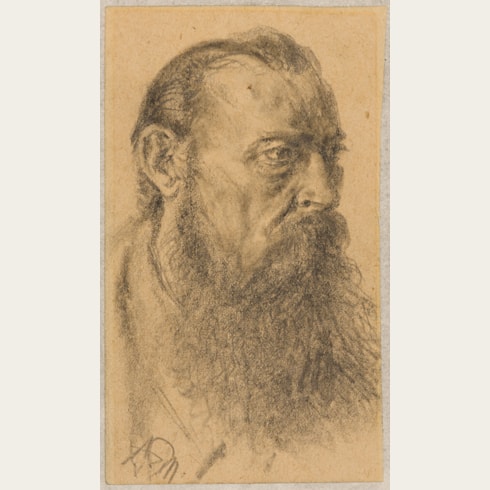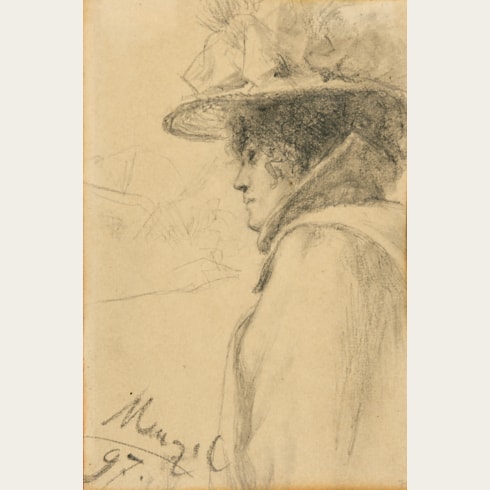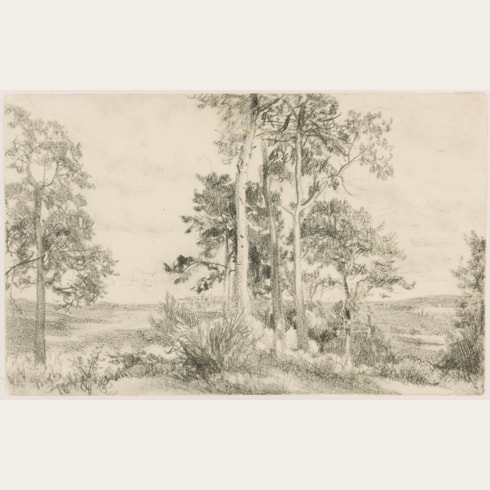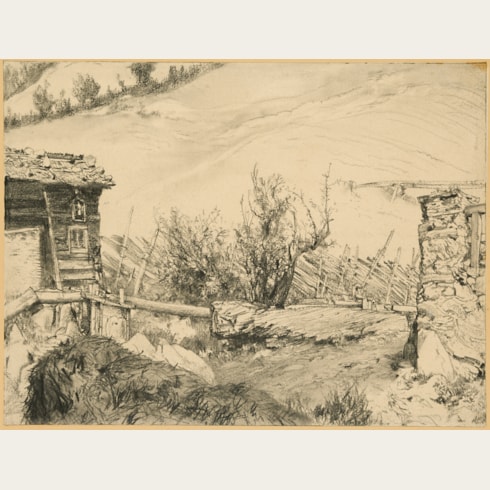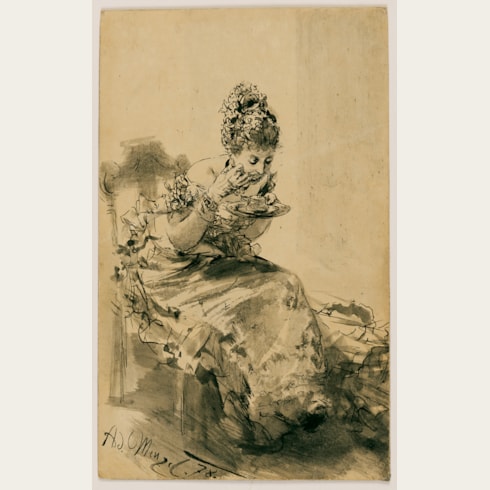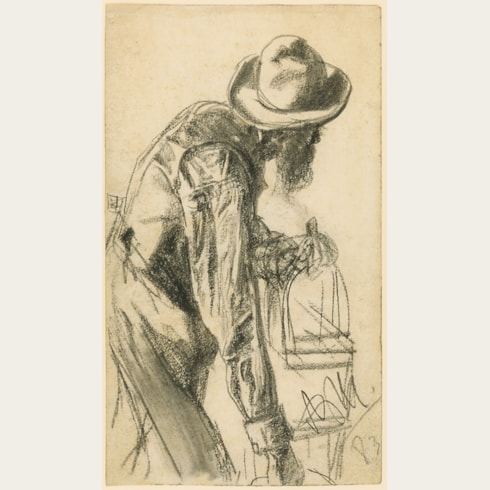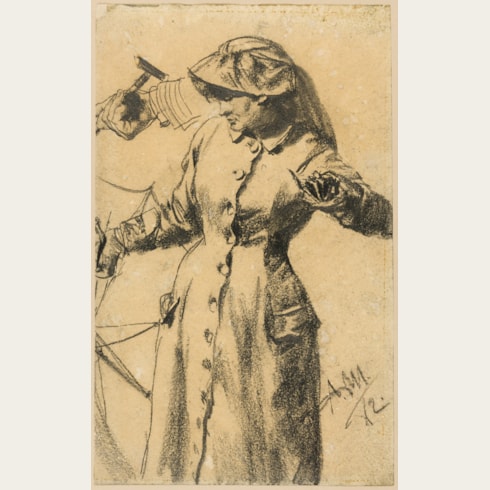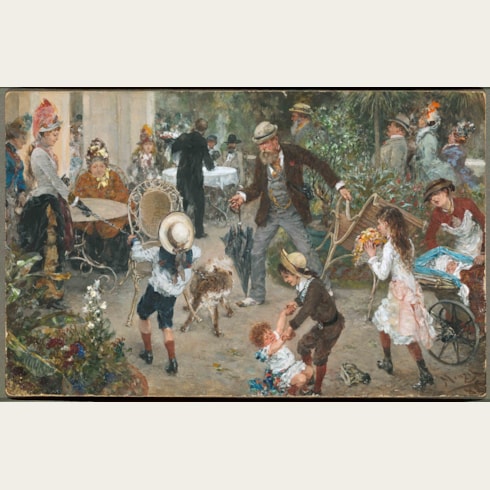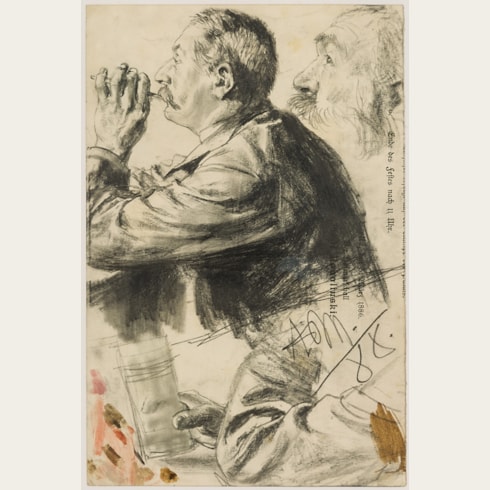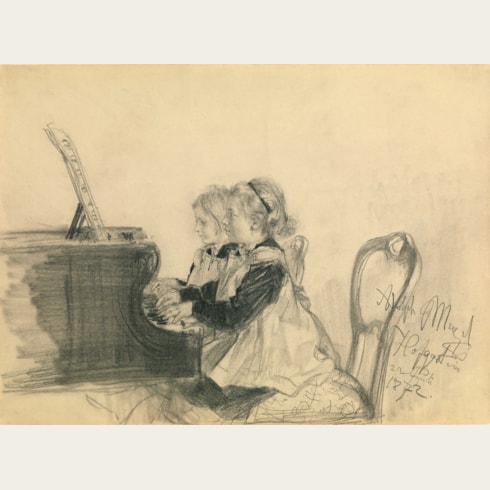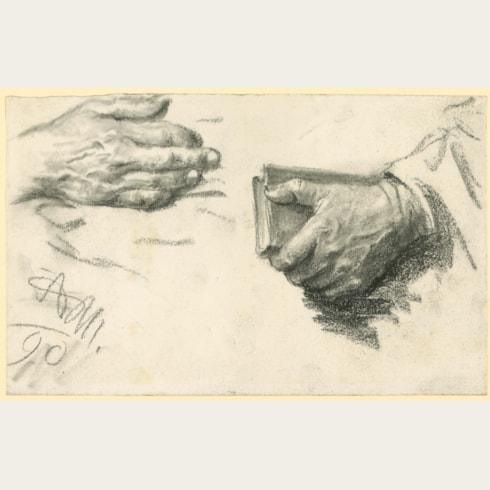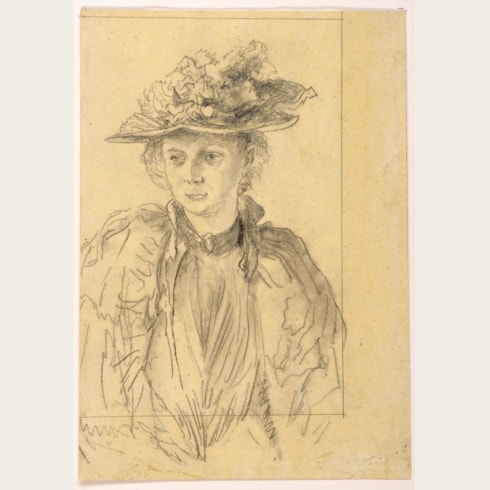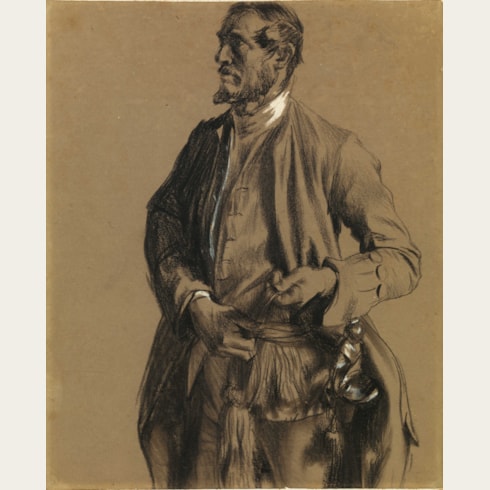Adolph MENZEL
(Breslau 1815 - Berlin 1905)
A Man Drinking
Signed with initials and dated A.M. / Oct. 84 at the lower right.
226 x 147 mm. (8 7/8 x 5 3/4 in.)
Another study for the same figure is found in a sketchbook used by Menzel between 1884 and 1892 and today in the Kupferstichkabinett in Berlin. A preparatory drawing for a different figure in the gouache Spa Guests at the Warm Kettle in Kissingen, depicting a woman drinking, was in a private collection in Hamburg in 1982, while a study of another woman in the same painting is today in the Museen für Kunst und Kulturgeschichte der Hansestadt Lübeck in Lübeck.
Six years later, in 1890, Menzel painted a larger gouache of a similar Kissingen subject, though horizontal in format and different in composition; this painting was with the Galerie Abels in Cologne in 1975. A somewhat analogous drawing of a man drinking, dated 1888 and formerly in the collection of Julius Held in Vermont, was used for this later painting.
Adolph Friedrich Erdmann von Menzel began his career working in his father’s lithography shop in Breslau (now Wroclaw in Poland) and later in Berlin, where his family moved in 1830. A brief period of study at the Akademie der Künste in Berlin in 1833 seems to have been the sum total of his formal training, and he is thought to have taught himself how to paint. At the outset of his career he worked as an illustrator, his activity in this field perhaps best exemplified by a series of some four hundred designs for wood engravings produced to accompany Franz Kugler’s History of Frederick the Great, published in instalments between 1840 and 1842. During the late 1840’s and 1850’s he was occupied mainly with a cycle of history paintings illustrating the life of Frederick the Great.
In 1861 Menzel received his most important official commission, a painting of The Coronation of King William I at Königsberg, on which he worked for four years. In the following decade, his lifelong interest in scenes of contemporary life culminated in what is arguably his masterpiece as a painter; the large canvas of The Iron Rolling Mill, painted between 1872 and 1875 and immediately purchased by the National-Galerie in Berlin. The last three decades of his career saw Menzel firmly established as one of the leading artists in Germany, a prominent figure in Prussian society and the recipient of numerous honours including, in 1898, elevation to the nobility. In the late 1880’s he began to abandon painting in oils in favour of gouaches, although old age meant that these in turn were given up around the turn of the century. Yet he never stopped drawing in pencil and chalk, able always to find expression for his keen powers of observation. A retrospective exhibition of Menzel’s work, held at the National-Galerie in Berlin a few weeks after the artist’s death in 1905, included more than 6,400 drawings and almost 300 watercolours, together with 129 paintings and 250 prints.
A passionate and supremely gifted draughtsman, Menzel was equally adept at watercolour, pastel, gouache and chalk. He was also able to draw with either hand, although he seems to have favoured his left. An immensely prolific artist (over four thousand drawings by him, together with 77 sketchbooks, are in the collection of the Nationalgalerie in Berlin alone), it is said that Menzel was never without a sketchbook or two in his pocket. His friend Paul Meyerheim described the artist’s appearance: ‘In his overcoat he had eight pockets, which were partially filled with sketchbooks, and he could not comprehend that there are artists who make the smallest outings without having a sketchbook in their pocket…an especially large pocket was installed…to hold a leather case, which held a pad, a coupe of shading stumps and a gum eraser.’ Menzel was widely admired as a draughtsman by his contemporaries, both in Germany and abroad, and Edgar Degas, for one, is known to have owned at least one drawing by him.
Provenance
Joey and Toby Tanenbaum, Toronto
Anonymous sale, New York, Sotheby’s, 12 October 1994, lot 326
Hazlitt, Gooden & Fox, London, in 1995.
Literature
Exhibition








